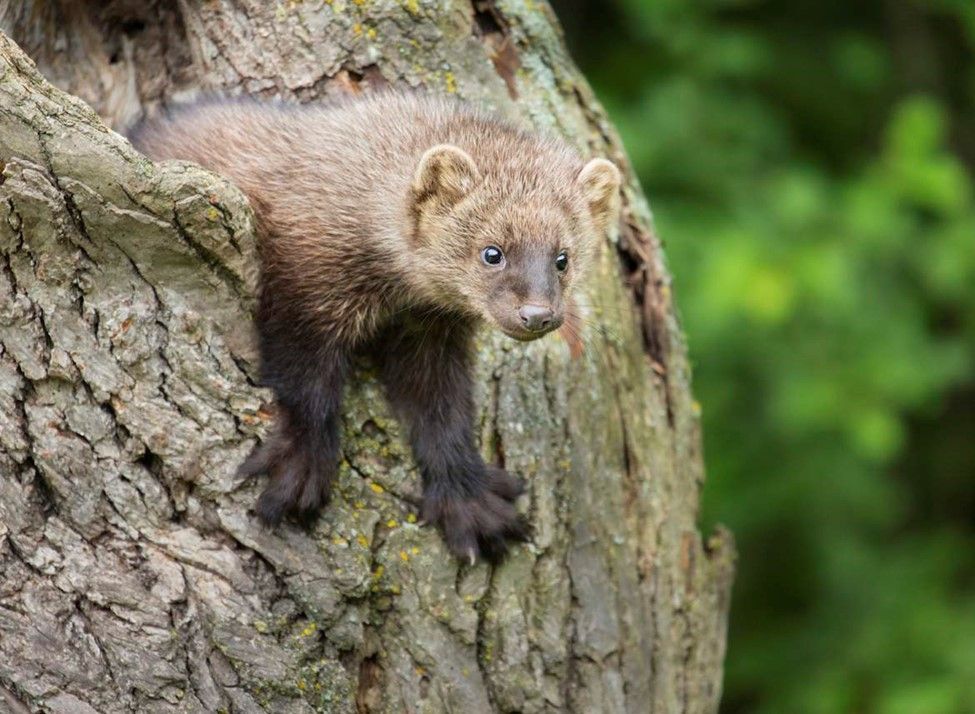Monumental Questions - I’ve heard the Fisher lives in the Monument but can you tell me more about them?

Fisher or Pacific Fisher (Photo by USFWS)
Fishers are one of the rarest carnivores documented within the Berryessa Snow Mountain National Monument boundaries. They’re elusive, solitary, and nocturnal and although you may never see one, you are probably familiar with other members of the Mustalid family which also includes otter, mink, marten, badger and wolverine (another special status species you may never see). Interestingly, the California Department of Fish and Wildlife (CDFW) uses the common name Pacific fisher while the United States Department of Fish and Wildlife (USFWS) uses just fisher, both refer to the same genus and species - Pekania pennanti. Fishers are only found in North America from New England to Tennessee, around northern Wisconsin and Michigan, the northern Rockies and a few small west coast populations in Oregon and California.
Fishers are about the size of a house cat weighing between four and twelve pounds, but are shaped a little differently with longer bodies, stout legs and long, sturdy tails. They have strong feet with retractable claws. Their fur is lush and dense and is usually a lighter brown near their head and neck and gets darker, almost black, toward their hind end and has a distinctive musky scent. As with other relatives in the family, the fisher is designed to hunt although it does not eat fish as the name suggests. Primarily a carnivore, they survive on a variety of small mammals and birds but will also eat insects, fruits, nuts and fungus. Fishers are one of the only species known to take on and eat porcupines!
Within their range, fishers inhabit large expanses of older mid-elevation (7,000-12,000 feet) pine and oak forests and prefer areas interspersed with lots of young and downed trees for hunting and cover. They den in hollows in older trees or in rocky crevices and forage in the dense undergrowth. Fishers are known to have multiple den sites and will frequently relocate their kits as needed to keep them safe. Fishers are very agile and are climbing professionals with specialized hind legs and feet that turn almost completely backwards giving them the capability to climb down trees head first.
Fishers are polygnous, meaning the male mates with more than one female during their mating season and because of this, the males’ home range is nearly twice the size of the females’ home range. Mating season is short, typically only occurring between March and April, however females have a reproductive strategy called “delayed implantation”. The eggs become fertilized during the brief mating season but the embryo does not begin to develop until several months later. This allows the birth to happen when resources are more abundant. This strategy helps species survive in highly seasonal environments but also lengthens the duration of the reproductive cycle. One to four kits are born about 40 days after implantation, usually February to April, just in time to mate again. The kits are born helpless and blind. Their eyes take about two months to open and once that happens, they are weaned shortly after. The young will stay with their mother until the fall and then venture out to set up their own home range. It usually takes two to three years for the young females to successfully reproduce.
Threats to the fisher populations include historic over harvesting for pelts and habitat loss due to logging, road construction and wildfires. Currently, only the distinct southern Sierra Nevada population is listed as state and federally threatened and afforded special-status species protection. In 2021, the USFWS designated 554,454 acres in the southern Sierra Nevada as critical habitat for the species. It is believed that there are only 300 adult fishers in this population.
-Kristie Ehrhardt; kehrhardt@tuleyome.org
Tuleyome Land Conservation Program Manager
RECENT ARTICLES






